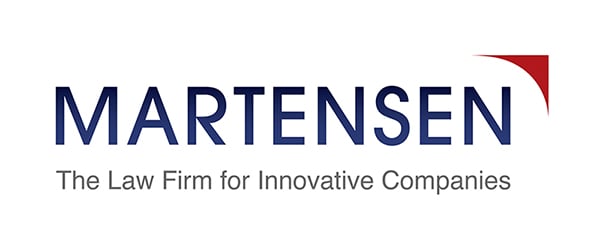Protecting Your Software In Defense Contracting
The following is a brief summary of the most important issues involved with protecting your intellectual property in government contracts – specifically with the Department of Defense (DoD) – either as a prime or subcontractor. Many contractors believe copyright protection is unimportant, since under government contract law the government has so-called “unlimited rights” to the “deliverable” – that is, the software – but nothing could be further from the truth.
We begin by dismantling this commonly-held myth, then we move on to explain how to provide copyright notice under government contract law. We then discuss the advantages and pitfalls associated with registering software source code with the United States Copyright Office. Finally, we briefly discuss a potential landmine buried in the arcane DoD acquisition regulations governing DoD contracts. While these topics do not exhaust the issue of copyrights in defense contracting, they do cover the primary concerns. As with any article from Martensen (or any other government contract attorney), please don’t hesitate to contact us for more information regarding your particular concerns.
Why is it important to mark software with a copyright notice even when DoD possesses “unlimited rights”?
Those familiar with DoD contracting know DoD has “unlimited” rights in technical data and software developed exclusively with government funds. If true, why worry about marking your government subcontractor IP with a copyright notice? Answer: Because the issue here isn’t the government or its “unlimited” rights: It’s another contractor (read “your competition”). Copyright notice puts your competitors on notice of your copyright protection and prevents them from using your original works without permission.
Further, “unlimited rights” isn’t, well, unlimited. While the Defense Federal Acquisition Regulation Supplement (DFARS) provides the government “unlimited rights” to “use, modify, reproduce, release, perform, display, or disclose computer software or computer software documentation in whole or in part, in any manner and for any purpose whatsoever, and to have or authorize others to do so,” (DFARS 252.227-7014), the government does not have the right to transfer ownership of its copyright license, nor to transfer ownership of your basic copyright. Marking software and software documentation with a copyright notice puts the would-be infringer on notice that your work has copyright protection.
Notice of copyright protection is important because works created by a government employee have no copyright protection. As a consequence, unless copyright notice has been provided along with a work, a contractor receiving that work from the government could reasonably assume the government subcontractor IP was originally created by the government. That is, without being “put on notice” of your copyright, the contractor can assume your work is a government work and can reuse your work or create derivative works from your work.
In contrast, when copyright notice has been provided, although the government can still sublicense its copyright license to a contractor according to government contract law, it cannot transfer the copyright itself, which belongs to the copyright owner. Practically, this means that while such a sublicensed contractor can produce your copyrighted works for the government’s use, it cannot use your works or derivations from your works commercially (or in follow-on government contracts, unless specifically sublicensed by the government to do so) without infringing your copyright. Moreover, without a sublicense from the government, the DFARS compliant contractor cannot even use those works for the government’s benefit.
This is why contract negotiations between you and the government Contracting Officer (CO), as well as the roles played by technical or operational “government customers” and the CO are critical. For instance, an uninformed “government customer” might feel the government’s “unlimited rights” give him/her the right to freely provide your source code (for instance) to other contractors operating on the government’s behalf. But this is not true. That authority rests with the CO and requires a formal sublicense tailored to grant only those rights necessary to achieve the goals of the government under a specific contract.
However, any DFARS compliant contractor receiving your code would immediately recognize it lacked an appropriate license – since your code provided copyright notice – and the company would not proceed without authorization from the CO, which would of course require granting a sublicense from the government to the contractor. This fact can be used to the your advantage as an IP prime subcontractor as a means to negotiate a third-party license with that contactor, which also relieves the CO of the burden of an otherwise lengthy sublicensing process. Bottom line: Even when the government possesses “unlimited rights,” copyright marking is strongly recommended.
What is the proper way to mark an item (especially software) with a copyright notice?
Many are familiar with the “©” copyright symbol. However, after the 1988 Berne Convention Implementation Act, which amended the 1976 Copyright Act to make the use of a copyright notice optional on copies of works published on and after March 1, 1989, this symbol is not required. All original works are copyrighted when they are created and saved on a tangible medium whether or not the “©” symbol – or any copyright notice, for that matter – is present.
However, notice is still advisable to warn users the work is protected from unauthorized copying and to provide a means for damage awards under federal statutes. Two types of damages may be awarded for copyright infringement: actual and statutory. Often actual damages (loss of profit) do not adequately address the harm inflicted by an infringer’s act, so to address this shortfall, Congress established “statutory damages.” However, statutory damages are available solely for registered copyrights. We’ll discuss copyright registration and statutory damages below. For now, let’s look at how to provide proper notice.
“Notice” is the responsibility of the copyright owner and does not require permission from, or registration with, United States Copyright Office (USCO). For “visually perceptible” copies – that is, any copy that can be seen or read, either directly (printable works, such as software source code, are included in this group) or with the aid of a machine (such as films) – the notice should contain three elements:
- the symbol © (letter C in a circle); the word “Copyright”; or the abbreviation “Copr.”;
- the year of first publication;
- the name of the copyright owner, an abbreviation by which the name can be recognized or a generally known alternative designation of owner.
Example: © 2016 SCTA
According to USCO, the copyright notice should be placed on copies in such a way that it gives reasonable notice of the claim of copyright: “The notice should be permanently legible to an ordinary user of the work under normal conditions of use and should not be concealed from view upon reasonable examination.” Generally, marking the title page, the page immediately following the title page or the first or the last page of the main body of a work will suffice for the notice requirement. For software, marking the header or placing the notice within a comment is normally adequate.
What are the advantages and disadvantages to the registration of source code with the United States Copyright Office (USCO)?
The immediate advantage of copyright registration is the potential award of “statutory damages” alluded to above. Award amounts of up to $30K are possible for each infringement under government contract law, and where willful infringement can be shown – as infringement in light of copyright notice would clearly qualify – damage award amounts can total up to $150K for each infringement. But registration comes at a price and it must be timely. Publication of a work starts a three-month clock within which to file your copyright registration. After that window expires, registration is not possible – meaning, neither are statutory damages!
Another potential pitfall is publication of a trade secret and your competitor’s access to the same – this is especially true for software. Fortunately, USCO has implemented a process to protect such programs. The specific requirements for registration are technical and vary depending on program length, software revision history and amount of material claimed as a trade secret, but the process generally involves redacting the code’s trade-secret-related portions. The redacted portions must be proportionately less than the remaining material and the non-redacted portion “must represent an appreciable amount of original computer code.”
Does DFAR 252.227-7027 provide the government with the ability to gain access to a company’s source code when the original contract’s list of deliverables was silent with respect to source code and only listed executable/object code as a deliverable?
The short answer: “Yes.” DFARS 252.227-7027, Deferred Ordering of Technical Data or Computer Software, enables the government to “order any technical data or computer software generated in the performance of this contract or any subcontract” for a period of up to three years after acceptance of the last deliverable under the agreement.
As defined by DFARS, “computer software” is a very broad term which includes computer programs, source code, source code listings, object code listings, design details, algorithms, processes, flow charts, formulae and any other material that would enable the software to be reproduced, recreated or recompiled. The bottom line is that if a -7027 clause is in your contract, the government can require you to turn over your source code to it for use as it deems fit and inclusion of this clause is now trending to be the rule rather than the exception. That said, the restrictions discussed above still apply. While a contractor can potentially gain access to your source code, the contractor cannot – assuming you properly mark it with copyright notice – commercialize your software.



